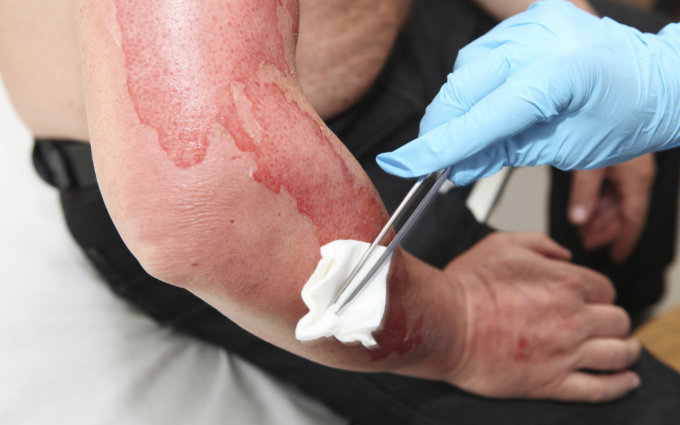08/16/2017

The American Burn Association reports that 450,000 patients undergo hospital and emergency room treatment for burns every year. Burn patients are often left with obvious and profound scarring, resulting in limited range of motion, difficulty returning to work and lasting psychological impact.
Recently, Paradigm conducted a webinar about new treatments for this complex injury titled, Innovations in Burn Scar Treatment. Burn surgery and rehabilitation specialist Jeffrey Saffle, MD, discussed how burn care has improved significantly over the last 20 years and, as a result, many people are now surviving significant injuries.
While advancements in care are positive news for injured people, the changes also provide new challenges for clinical specialists from the standpoint of rehabilitation for those who would not have survived in the past. Now, patients and physicians alike have high expectations for functional and cosmetic outcomes.
Let’s explore some of the traditional and emerging methods of care for those who have experienced catastrophic burn injuries.
With thousands of patients undergoing treatment, burn scar management is essential for three main reasons:
While there are a variety of approaches to burn scar management, three practices are most commonly used by physicians. The most common method is the use of non-invasive compression garments, in which scars grow in response to pressure and will be less raised. The wound will still take a full year to heal, but if the garments are worn faithfully for 23.5 hours a day, the final result will be of better quality and, along with physical therapy, the patient will have enhanced function and range of motion.
Silicone gels or sheets can produce significant improvements in small scars, but it is more difficult to use for larger scars. Silicone provides an air-water tight seal, is economical, non-invasive, good for hard-to-compress areas, and for reducing itching. Prolonged use is required and they can be uncomfortable.
As a traditional method that has been used for a long time, there is no question that steroids work. They directly reduce inflammation and the immune response, and they help keep some of the tissue from proliferating so the scars are not as thick. The drugs are administered as a topical cream or injection. On the downside, injections are painful, useful for only for small body surface areas and multiple treatments are required.
Other traditional approaches include excision and closure grafting, scar massage, moisturizing lotions, cryotherapy, cytotoxic drugs, aloe vera, vitamin E, and ultrasounds.
Many people are unaware of recent advances in burn care, such as laser treatment. Two types of medical lasers are now commonly used in burn scar management:
The laser treatment of burn scars works most of the time, with a 60-70% effective rate. But this course of treatment should be used selectively and as part of a comprehensive program that includes moisturizers, garments, steroids and therapy. When considering the use of lasers, be sure to review an array of patient healing factors, the location of the scar, age/race, psychological issues, and the philosophy of the physician and burn unit. Be selective about the area, and know that multiple treatments are necessary. Scar management is a coordinated part of burn rehabilitation and should be applied in a burn unit by burn care professionals in a structured manner. An evaluation should be performed after grafting/healing, as early as six weeks post-injury.
Looking ahead, experts predict that lasers will be used much more frequently and much earlier in burn care, and for even longer after the injury. For a more detailed review of the latest in burn scar treatment, including the three stages of wound healing and a list of laser treatment complications, listen to a replay of our June 2016 webinar, Innovations in Burn Scar Treatment. Stay tuned for upcoming topics in our quarterly webinar series.